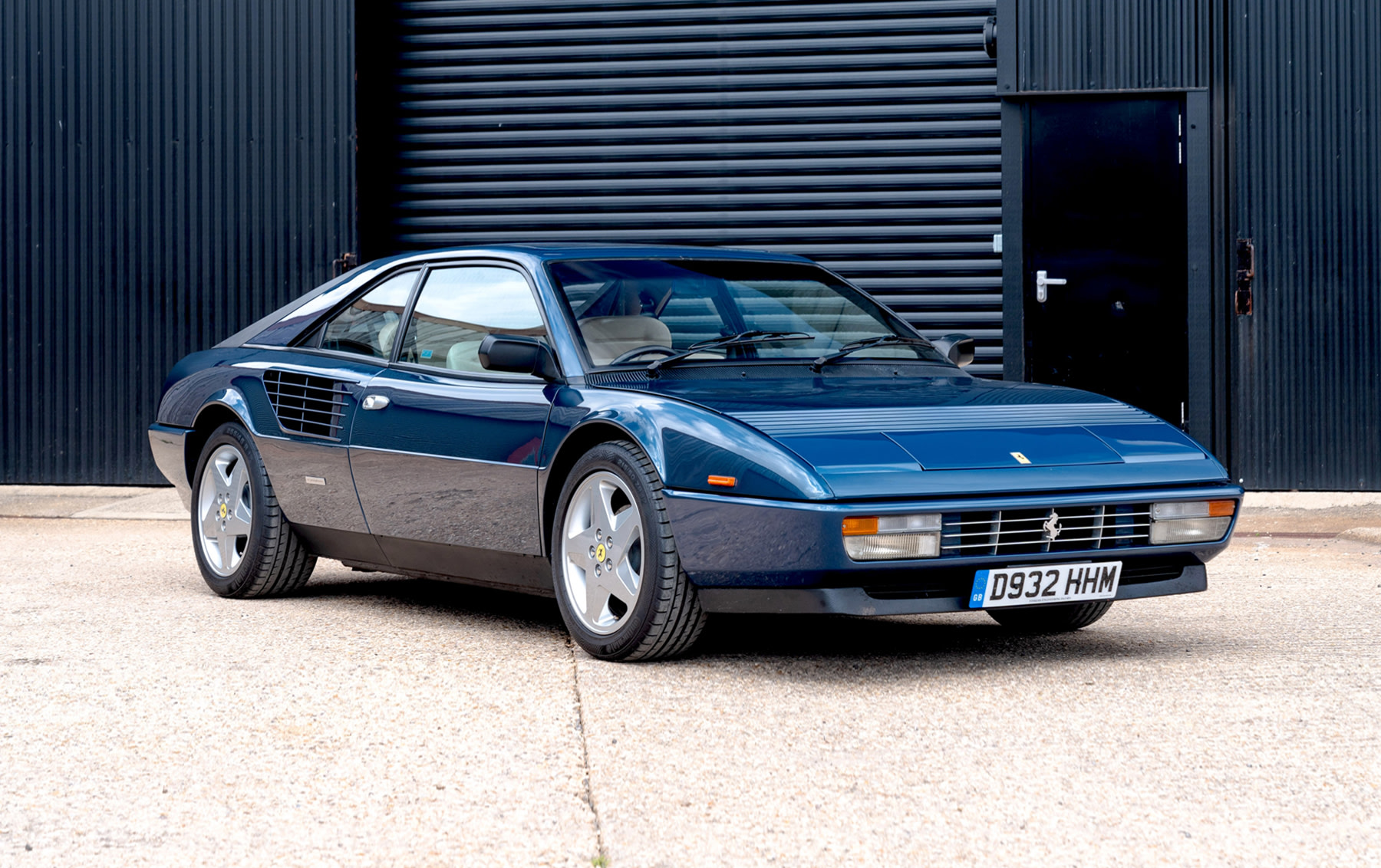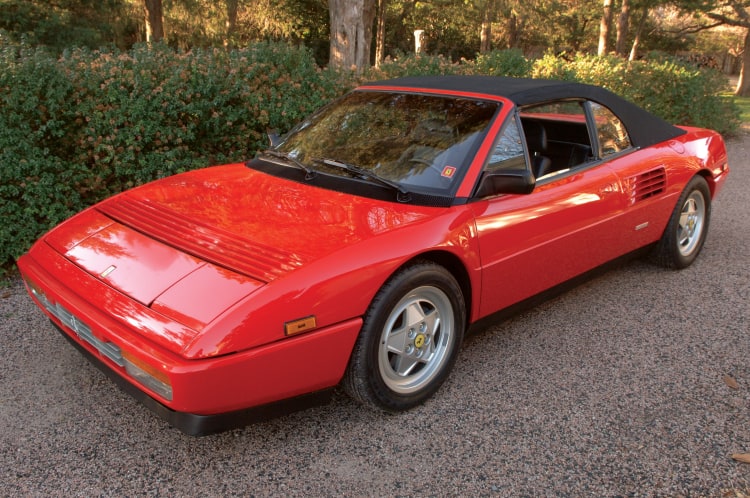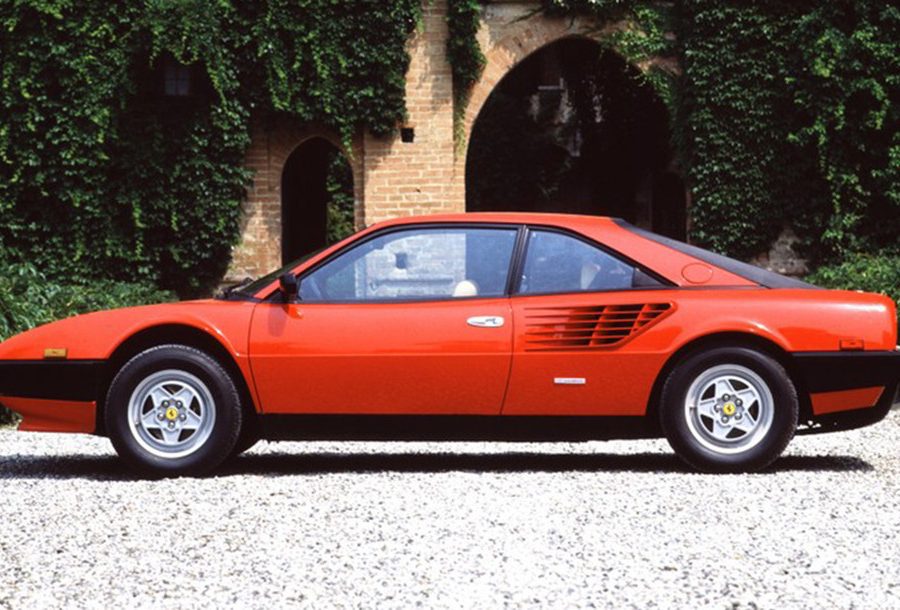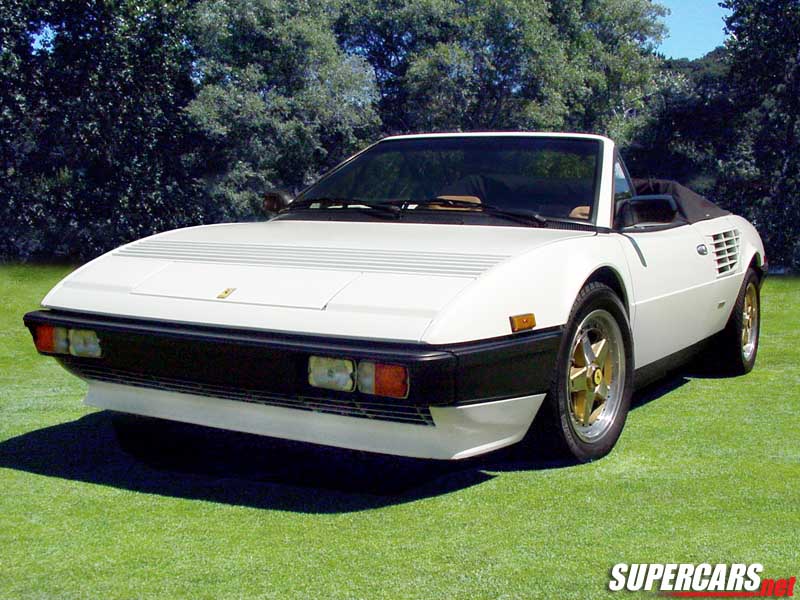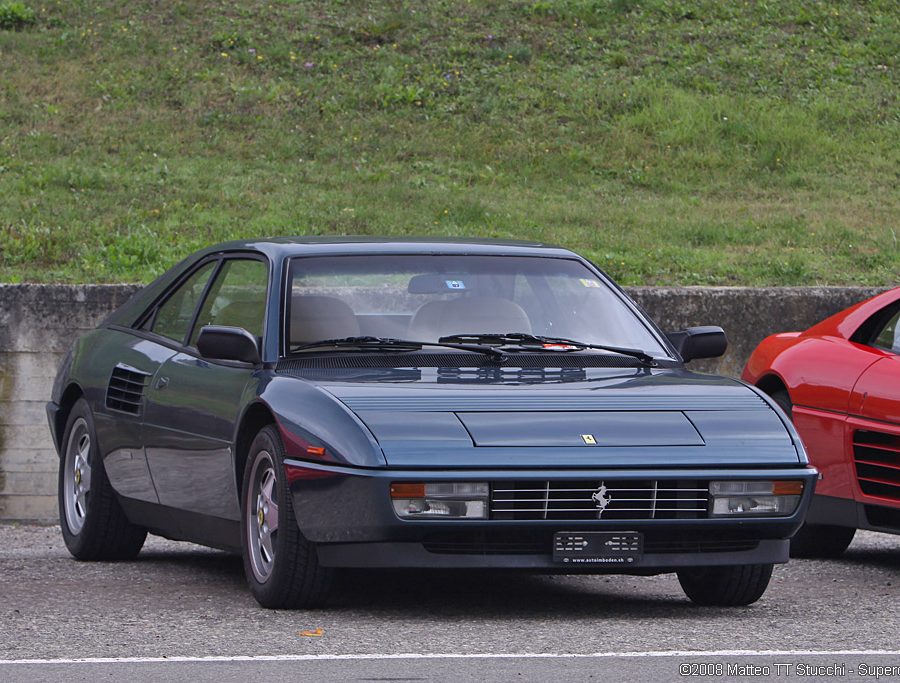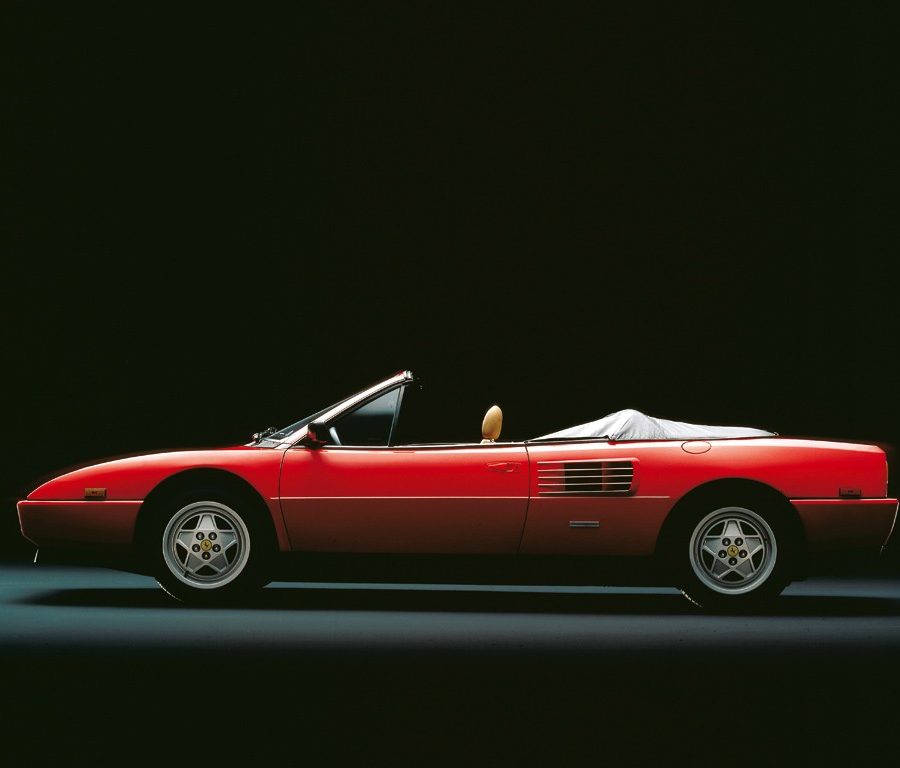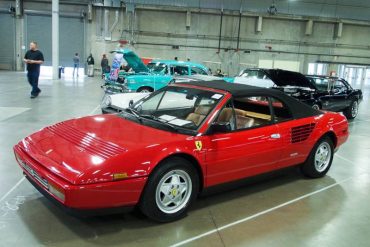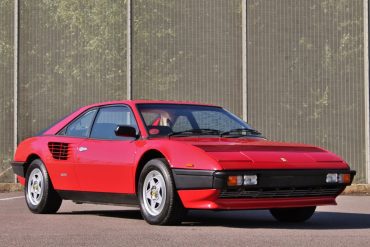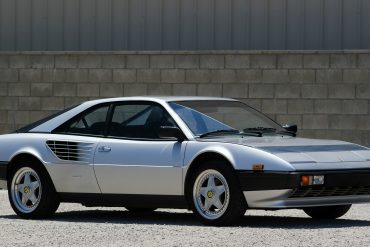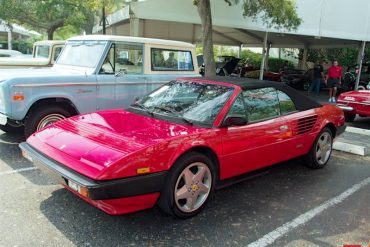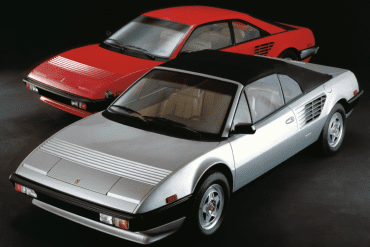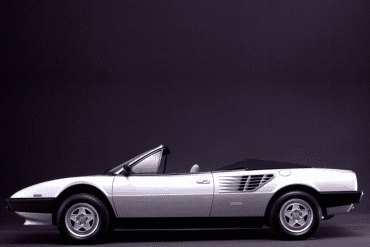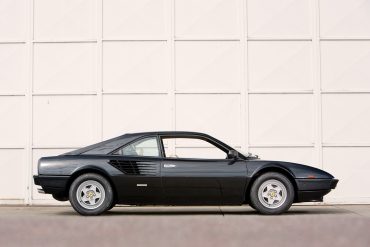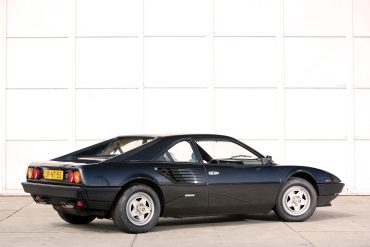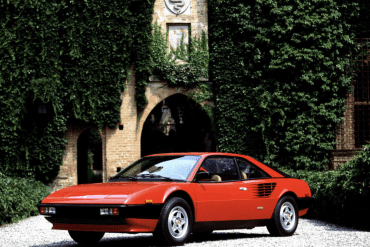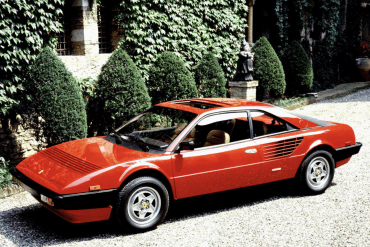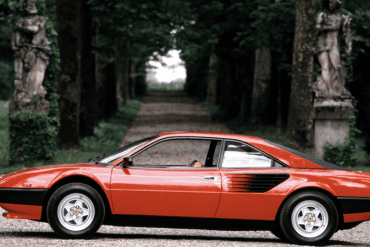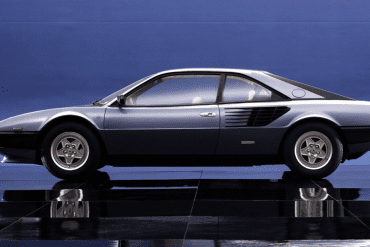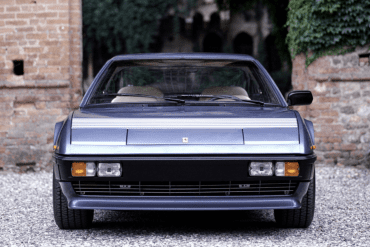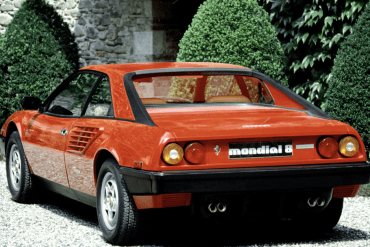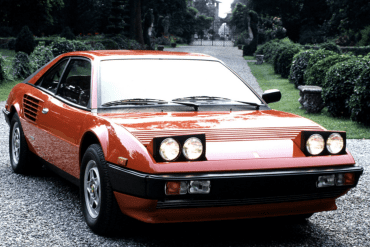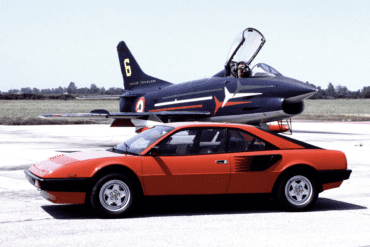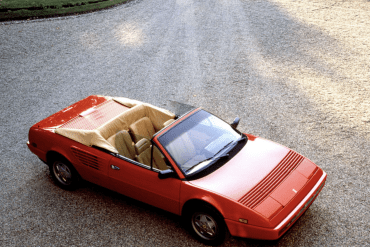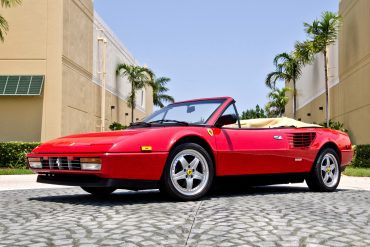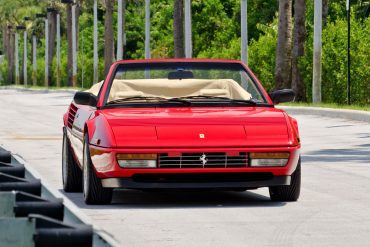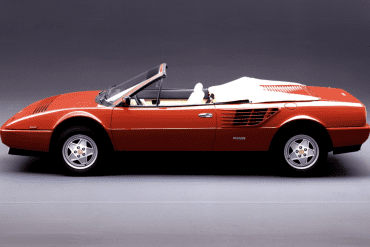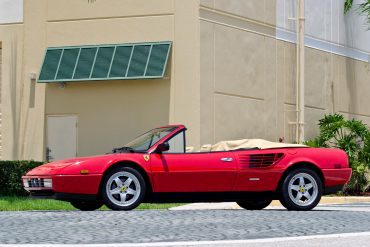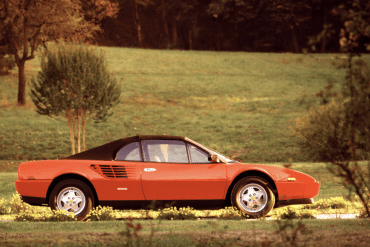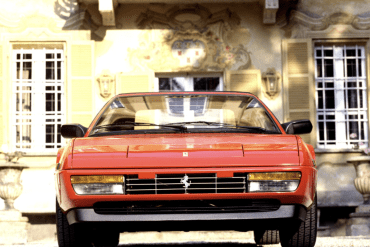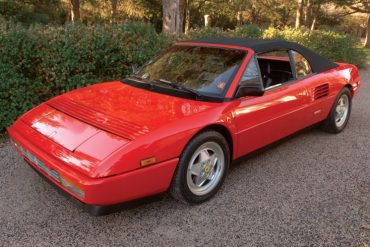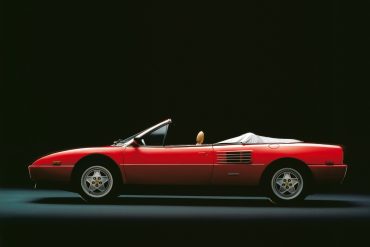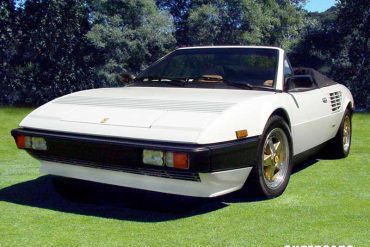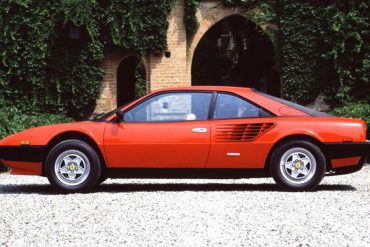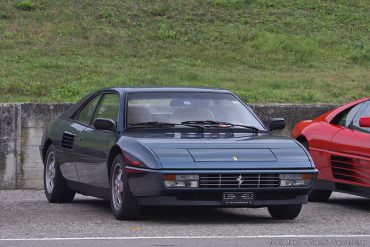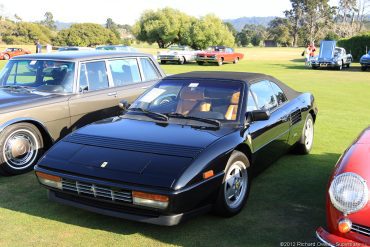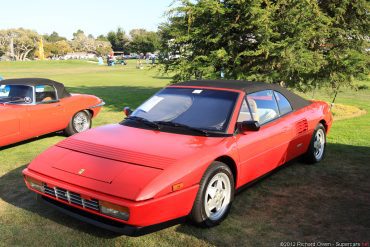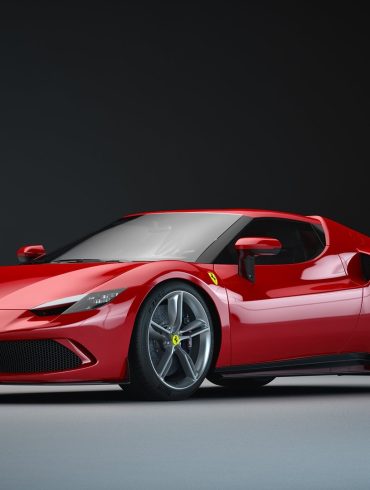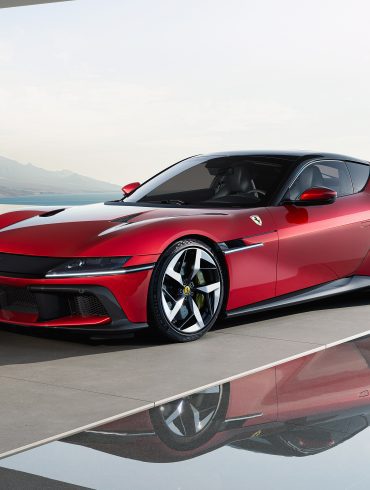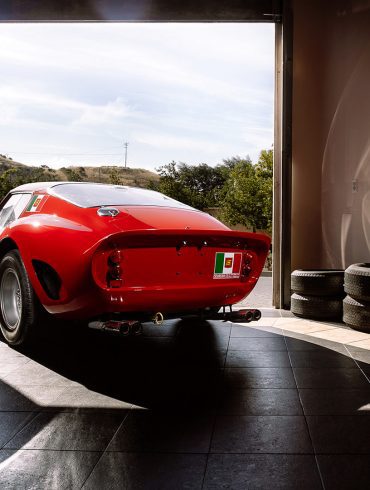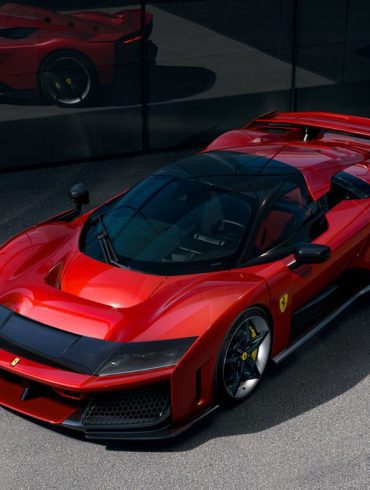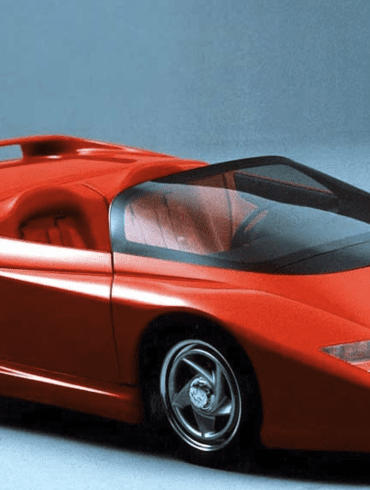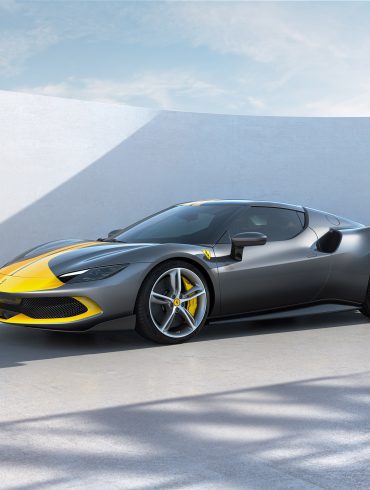Ferrari Mondial
The Ultimate Guide
Welcome to the bargain Ferrari. Practical, sound great and with loads of room for the kids, the Mondial is the everyday Ferrari. It is the also the car that gets the most shade from Ferrari fans, often called the worst Ferrari ever. The Mondial was designed to combine the features of a sports car with a comfortable GT. It was built alongside the 308-348 ranges as the more practical Ferrari.
Overview / Variants / Models In-Depth / Buyer's Guide / Images / More Updates
Ferrari Mondial - The Affordable Family Ferrari
The Ferrari Mondial, introduced in 1980, represents a unique chapter in Ferrari’s history as a more accessible, practical mid-engine 2+2 sports car. Positioned as a successor to the Ferrari 308 GT4, the Mondial was Ferrari’s attempt to create a more family-friendly model with a balance between performance and usability, distinguishing it from Ferrari’s traditionally uncompromising sports cars.
Though often polarizing, the Mondial is recognized today for its approachable design and represents an era when Ferrari experimented with expanding its market appeal. This article explores the Ferrari Mondial’s history, its various model variants, performance, reception, and its lasting legacy.
Ferrari’s Experiment in Practicality
The Ferrari Mondial debuted in 1980 as Ferrari’s second mid-engine 2+2 following the 308 GT4, a model that helped broaden Ferrari’s audience by offering a more spacious, family-oriented sports car. Named after Ferrari’s famous racing car of the 1950s, the Mondial (meaning "world" in French) was conceived as a global model, intended to combine Ferrari’s performance with increased usability. Designed by Pininfarina, the Mondial’s styling differed from the angular Bertone-designed 308 GT4, adopting smoother lines and a more modern look.
In addition to being a practical 2+2, the Mondial was notable for Ferrari’s new chassis construction technique, which combined a steel frame with bolt-on subframes for easier maintenance. This approach allowed mechanics to service the engine and transmission without needing to remove the entire powertrain. However, the Mondial’s design choices and relatively subdued performance initially led to mixed reception, with some critics feeling it didn’t embody the same level of aggression as Ferrari’s two-seaters.
Evolution Over the Decade
The Mondial saw several iterations throughout the 1980s, each improving on performance, styling, and technical advancements.
Ferrari Mondial 8 (1980–1982)
The original Ferrari Mondial 8, introduced in 1980, was powered by a 3.0-liter V8 engine producing 214 horsepower, the same engine that powered the Ferrari 308 GTBi. It featured Bosch K-Jetronic fuel injection, which improved fuel efficiency and emissions but came at the cost of power, particularly when compared to its carbureted predecessors. The Mondial 8 was criticized for its modest performance, with a 0-60 mph time of around 8.2 seconds, slower than other Ferraris of the era.
The Mondial 8’s focus on practicality and reliability over outright performance led to lukewarm reviews, with Road & Track calling it "more sensible than spectacular," noting that it offered Ferrari’s prestige with a level of comfort and usability that was unusual for the brand.
Ferrari Mondial Quattrovalvole (Mondial QV) (1982–1985)
In 1982, Ferrari introduced the Mondial Quattrovalvole (QV), or four-valve, which addressed some of the performance criticisms of the Mondial 8. The new model featured an upgraded 3.0-liter V8 engine with a four-valve-per-cylinder configuration, increasing power output to 240 horsepower and reducing the 0-60 mph time to around 7.4 seconds. This model marked a noticeable improvement in performance, with better acceleration and more engaging driving dynamics.
The Mondial QV helped restore some of Ferrari’s sporting reputation and was generally better received than the Mondial 8. Motor Trend noted that "the Mondial QV brings more spirit to the series," praising its enhanced power and driveability.
Ferrari Mondial 3.2 (1985–1989)
The Mondial 3.2, introduced in 1985, featured a larger and more powerful 3.2-liter V8 engine, delivering 266 horsepower and capable of achieving a 0-60 mph time of approximately 6.8 seconds. This variant further improved performance and reliability, while its refined suspension and improved brakes made it a more balanced sports car.
The 3.2’s styling also received subtle updates, with color-matched bumpers and cleaner, more integrated lines that modernized the car’s appearance. The Mondial 3.2 gained popularity for its improved performance and is considered one of the best-balanced models in the Mondial lineup.
Car and Driver commented on the Mondial 3.2, stating that “Ferrari has sharpened the Mondial’s edges,” recognizing its improved performance and praising its revised styling as bringing it closer to Ferrari’s aesthetic standards.
Ferrari Mondial t (1989–1993)
The final and most significant update came in 1989 with the introduction of the Ferrari Mondial t. The “t” referred to the car’s new “transverse” gearbox layout, inspired by Ferrari’s Formula 1 engineering. In this layout, the engine remained mounted longitudinally, while the gearbox was transverse, allowing for a lower center of gravity and improved handling dynamics. The Mondial t featured a 3.4-liter V8 engine producing 300 horsepower, with a 0-60 mph time of around 6.3 seconds, making it the fastest Mondial yet.
The Mondial t also came with the option of Ferrari’s first power-assisted steering and an electronically adjustable suspension, making it one of the most technologically advanced Ferraris of the time. The refined suspension and handling made it a significantly better car to drive, helping to address the criticisms of earlier models.
Road & Track called the Mondial t "the best Mondial yet" and praised its dynamic improvements, noting that the Mondial t "finally delivers on the promise of a practical Ferrari without compromising the driving experience."
A Balance of Practicality and Performance
Designed by Pininfarina, the Ferrari Mondial’s styling aimed to blend Ferrari’s sports car aesthetics with a more refined, approachable appearance. The long wheelbase allowed for a spacious 2+2 layout, while the mid-engine design preserved Ferrari’s signature driving dynamics.
Chassis and Maintenance-Friendly Design: The Mondial’s bolt-on subframe construction allowed for easier maintenance, which was a notable innovation. This feature provided greater accessibility to the engine and drivetrain components, reducing maintenance costs compared to other Ferraris.
Interior and Comfort: The Mondial’s interior was more spacious than traditional Ferrari models, with room for four passengers. It included features such as air conditioning, improved sound insulation, and a comfortable driving position, aiming to attract buyers looking for a more versatile sports car experience.
Emphasis on Usability Over Speed
The Ferrari Mondial’s performance improved over its production run, with each iteration addressing the earlier model’s limitations. However, the Mondial was always more of a practical grand tourer than an outright sports car.
Acceleration and Speed: With a 0-60 mph time ranging from 8.2 seconds in the Mondial 8 to 6.3 seconds in the Mondial t, the Mondial offered a balanced but less intense driving experience compared to two-seater Ferraris.
Handling Dynamics: The Mondial’s mid-engine layout and balanced weight distribution allowed for respectable handling, especially in the Mondial t with its improved chassis and transverse gearbox layout.
Reliability and Usability: The Mondial was designed with a focus on reliability, especially in the later models. Its Bosch fuel injection and accessible layout made it a more dependable option in the Ferrari lineup, although some early models faced electrical and maintenance issues.
Mixed Views on Ferrari’s Practical Experiment
The Mondial received mixed reviews throughout its production run. While some praised Ferrari’s effort to create a versatile, more accessible model, others felt it lacked the excitement and aggressive performance associated with the Ferrari brand.
Evo Magazine later reflected on the Mondial, noting, "It’s a Ferrari with a purpose beyond speed—perhaps not what every enthusiast dreams of, but it has a unique place in Ferrari history."
Reviewers generally appreciated the improvements made with each successive model, particularly the Mondial 3.2 and Mondial t, which addressed the performance issues of earlier models. Car and Driver praised the Mondial t, noting that “Ferrari finally found the right balance between practicality and performance.”
A Unique Place in Ferrari’s History
The Ferrari Mondial holds a distinctive place in Ferrari’s legacy as a car that pursued versatility and usability, something Ferrari rarely focused on before or since. While it may not be the fastest or most celebrated model, the Mondial’s emphasis on practicality and innovation helped it carve out a loyal following among Ferrari enthusiasts.
Today, the Mondial is often considered a “gateway” Ferrari, appealing to those looking for an entry into Ferrari ownership with a more accessible, everyday-friendly model. Its 2+2 seating, maintenance-friendly design, and improved reliability make it a popular choice among collectors looking for a classic Ferrari that offers both performance and usability.
Ferrari Mondial Specs
Manufacturer: Ferrari
Production: Mondial 8: 1980– 1982 (703 produced), Mondial qv: 1983– 1985
1,145 (coupé) produced, 629 (cabriolet) produced, Mondial 3.2: 1986 – 1988
987 (coupé) produced, 810 (cabriolet) produced, Mondial t: 1988– 1993 858 (coupé) produced, 1,017 (cabriolet) produced
Assembly: Modena, Italy
Designer:
Pierangelo Andreani, Leonardo Fioravanti
Class: Grand tourer
Body style: 2+2 coupé, 2+2 cabriolet
Predecessor: Ferrari 208/308 GT4
Did You Know?
The Mondial was intended to be a more usable and versatile Ferrari, with seating for four and a decent amount of luggage space. It was marketed towards families and those who wanted a Ferrari they could drive every day.
It was the first Ferrari with a transverse V8 and a detachable subframe: This innovative design allowed for easier maintenance and repair of the engine and transmission.
The Mondial was produced for 13 years (1980-1993), making it one of Ferrari's longest-running models. It went through several iterations and updates during that time.
That the Mondial is fun to drive, fast and practical should make it Ferrari's most popular car.
Motor Trend (1981)
Ferrari Mondial Variants
The Mondial 8, just like the whole Mondial family, used a mid/rear-mounted V8 engine, featuring Bosch K-Jetronic fuel injection system. It was shared with the 308 GTBi/GTSi and was based on the unit mounted under the hood of the Ferrari Dino. The chassis was also shared with previous models, but was stretched by 3.9 inches. The suspension used unequal-length double wishbones and Koni dampers all around. Thanks to its construction, it was the cheapest Ferrari to maintain, because major services were performed without removing the entire engine/transmission subframe. The Mondial was a practical and usable Ferrari, and while the initial spec was underwhelming, Ferrari did make it progressively lighter and more performance focused with each iteration.
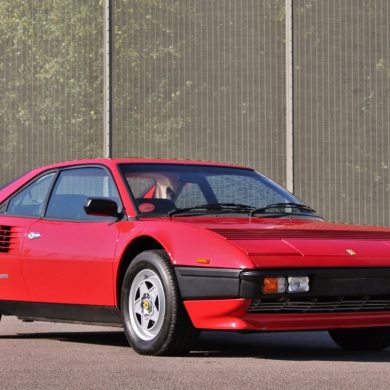
Ferrari Mondial 8
Type: Production Car
Years: 1981 - 1982
Production: 703 units
Engine: 3.0 L Nat Asp V8
Power: 214 bhp @ 6600 rpm
Torque: 181 lb/ft @ 4600 rpm
0-60 mph: 9.4 seconds
Top Speed: 143 mph
The Mondial 8 was powered by an upgraded version of the small-displacement V-8 Ferrari created in the early 1960. From a performance perspective the Mondial was weak. 0-60 acceleration time was a glacial 9.4 seconds and top speed was a paltry 143 mph. It was the first affordable Ferrari but it just wasn't that exciting. Learn more.
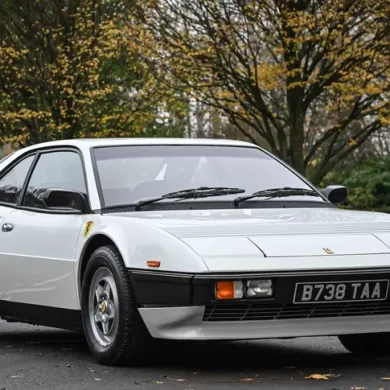
Ferrari Mondial QV
Type: Production Car
Years: 1982 - 1985
Production: 1145 units
Engine: 3.0 L Nat Asp V8
Power: 237 bhp @ 7000 rpm
Torque: 191 lb/ft @ 5000 rpm
0-60 mph: 7.4 seconds
Top Speed: 150 mph
The first Mondial engine, although a DOHC design, used just two valves per cylinder. The 1982 Quattrovalvole or QV introduced a new four-valve head. Appearance was largely as per the Mondial 8, although with red engine heads and prominent "Quattrovalvole" script at the rear. A worthy update for the Mondial.
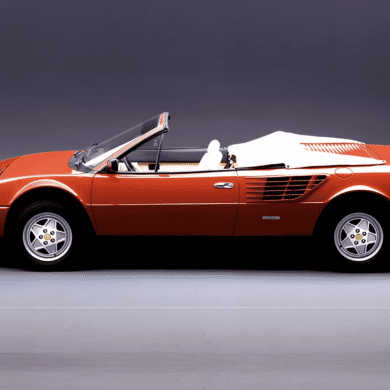
Ferrari Mondial Cabriolet
Type: Production Car
Years: 1983 - 1985
Production: 629 units
Engine: 3.0 L Nat Asp V8
Power: 237 bhp @ 7000 rpm
Torque: 191 lb/ft @ 5000 rpm
0-60 mph: 7.4 seconds
Top Speed: 150 mph
A new Cabriolet convertible model was added for 1983. The body styling remained the same as the coupé variant, with the roof maintaining the 'buttress' design, though the Cabriolet required the rear seats to be mounted closer together laterally. The intro of the Cabriolet saw popularity rise. Learn more.
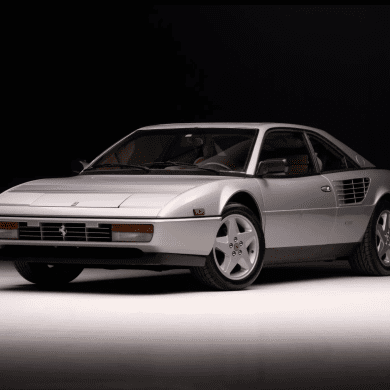
Ferrari 3.2 Mondial
Type: Production Car
Years: 1985 - 1988
Production: 987 units
Engine: 3.2 L Nat Asp V8
Power: 270 bhp @ 7000 rpm
Torque: 224 lb/ft @ 5500 rpm
0-60 mph: 7.4 seconds
Top Speed: 155 mph
The Mondial 3.2 was first presented at the 1985 Frankfurt Auto Show. Like the new Ferrari 328, the Mondial's engine grew in both bore and stroke to 3.2 L, with power now up to 270 bhp. Performance improved slightly, but it was still underwhelming. Styling was refreshed and the 3.2 also boasted a big interior update. Learn more.
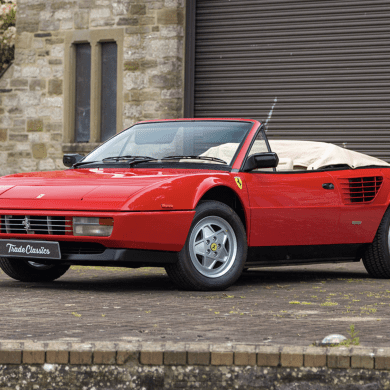
Ferrari 3.2 Mondial Cabriolet
Type: Production Car
Years: 1985 - 1988
Production: 810 units
Engine: 3.2 L Nat Asp V8
Power: 270 bhp @ 7000 rpm
Torque: 224 lb/ft @ 5500 rpm
0-60 mph: 7.4 seconds
Top Speed: 155 mph
The Mondial 3.2 was first presented at the 1985 Frankfurt Auto Show. It was available as both a coupe and convertible, performance improved slightly, but it was still underwhelming. Styling refreshed with restyled and body-coloured bumpers, similar to the 328 with integrated indicators and new alloy wheels. Learn more.
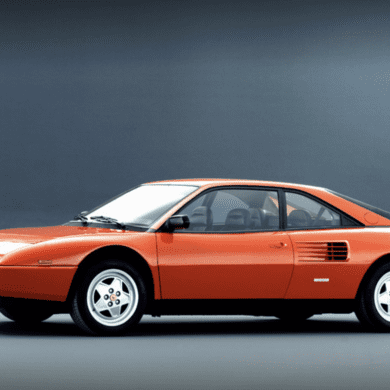
Ferrari Mondial T
Type: Production Car
Years: 1989 - 1993
Production: 858 units
Engine: 3.4 L Nat Asp V8
Power: 300 bhp @ 7200 rpm
Torque: 238 lb/ft @ 4200 rpm
0-60 mph: 6.6 seconds
Top Speed: 159 mph
The final Mondial evolution was 1989's Mondial T. It was a substantially updated. The previously transverse engine mounted longitudinally while the gearbox remained transverse, thus forming a 't'. A longer engine could be mounted lower in the chassis, improving handling dramatically. Available as coupe and cabriolet. Learn more.
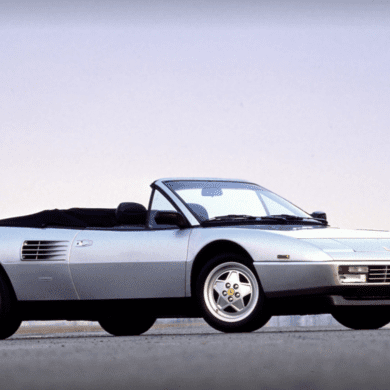
Ferrari Mondial T Cabriolet
Type: Production Car
Years: 1989 - 1993
Production: 1,017 units
Engine: 3.4 L Nat Asp V8
Power: 300 bhp @ 7200 rpm
Torque: 238 lb/ft @ 4200 rpm
0-60 mph: 6.6 seconds
Top Speed: 159 mph
The final Mondial evolution was 1989's Mondial T. It was a substantially updated. The previously transverse engine mounted longitudinally while the gearbox remained transverse, thus forming a 't'. A longer engine could be mounted lower in the chassis, improving handling dramatically. Available as coupe and cabriolet. Learn more.
Ferrari Mondial Images & Wallpapers
A curated collection of our favorite Ferrari Mondial wallpapers and pictures.
The Mondial 3.2 is a genuine four-seater with a decent boot, and it goes like stink.
Fast Lane magazine (1986)


